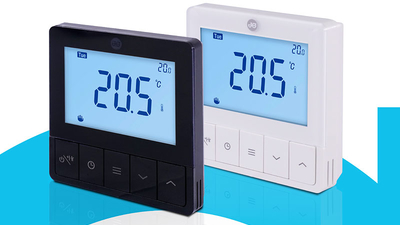Six considerations for smart heating installation

Smart heating installation is fast becoming the norm, with every man and his dog wanting to be able to remotely control their heating, particularly as the cold winter nights draw in. However, when it comes to designing new house builds, or improving older homes, the energy efficiency of smart heating is just as valuable as the convenience it provides to the homeowner.
Smart Heating Systems
Most smart heating systems only turn the whole house On or OFF, but a truly Smart heating installation allows each room of a house to have its heating activated at different times remotely through smart devices, facilitating heat distribution only where, and as required, allowing householders to dictate heat patterns according to their lifestyle. In the first of our technology advice blogs, we take a look at the six key points that need to be considered when installing smart heating controls.
Think inside the zone
The term zone is used to describe an area to be heated and controlled by one thermostat. Typically, the entire house will be sectioned into different rooms where the temperature and heating duration needs to be controlled. However, there may be instances where two rooms are effectively combined into one room, such as an open-plan kitchen and dining area. We can then treat these combined rooms as one as far as heating is concerned, this is why we class each area the thermostat controls as a zone rather than a room. So, plan out your zones when discussing a smart heating installation and agree with the customer before installing the thermostats.
Heating Thermostats aren’t for sharing
It is not uncommon for some installers and homeowners to use one thermostat to try and control more than one zone, but this is not considered best practice, because a thermostat is only capable of measuring the temperature and reacting to the area that it is installed in. When a single thermostat is used to control multiple zones, it can only provide an average reading of the combined temperatures. This can lead to inaccurate temperature control, as different zones may have different heating requirements based on their individual characteristics, such as room size, insulation, or exposure to sunlight. It is best to use individual thermostats for each zone to achieve precise control, customised settings, and increased energy efficiency.
Lifestyles are key
When considering which zones to include in a heating system, it is important also to consider the lifestyles of the occupants in the house. For example, not all bedrooms need to be heated at the same time as other rooms such as the kitchen and living rooms. Bedrooms only need to be warm early in the morning and then can be set to a background temperature. Living rooms need not be heated in the morning during workdays, unlike the weekends when they will be used all day long. Considering the occupants' lifestyles when determining heating zones is vital for achieving energy-efficient and comfortable living environments. By adjusting heating schedules to match occupancy patterns, households can experience significant energy savings while maintaining comfort levels.
Take your time
As in most cases, timing is everything when it comes to smart heating. The last thing you want is for a heating system to only deliver short and sporadic bursts of heat - that’s neither convenient nor energy efficient. Deciding on the timing parameters at which each individual zone will be heated is crucial to efficient smart heating installation. Householders must be provided with an intelligent system which allows them to control the specific times that they want to activate their heating, and for which duration. Only when a smart control system puts the user completely in control, is it a successful addition to any house.
Don’t sweat it
Temperature is key to any effective smart heating installation but when you think about temperature in the context of smart heating; don’t just take into account minimum and maximum levels.
Simply installing heating controls in a home does not save money. The system needs to be used in a way that changes the traditional process for heating a room, in order to save costs. For example, heating only the rooms in use can save money when compared to heating all rooms at the same time. Therefore, a key consideration for smart heating installation needs to be reducing overheating in the house. This means careful planning is required when calculating which room fits into each zone, and what temperature each zone is heated to, at various parts of the day. Again, this comes down to the lifestyle of the household. There’s no point in having the same heating temperature for each zone.
Don’t suffer a meltdown
The interlock is the final stage of any smart control design and is the physical action needed to switch the boiler ON and OFF, when the desired heating temperature has been reached. Traditional heating systems do not do this as they just have one central boiler time switch that is combined with old-fashioned TRV stopping the flow of water to the radiators but still leaving the boiler switched ON, which results in energy wastage. A smart heating installation will allow the boiler to be switched ON or OFF from every zone, so the boiler is turned ON only when needed.
To sum it all up
Smart heating installation offers a host of benefits that go beyond convenience and remote control capabilities. By considering the key points discussed in this blog post, homeowners can make informed decisions when implementing smart heating systems. Customising heating zones based on occupancy patterns, using individual thermostats for precise control, and optimising temperature settings according to lifestyle needs can result in significant energy savings and enhanced comfort. The integration of smart heating technology not only provides a more efficient and personalised heating experience but also contributes to a greener and more sustainable future. Embracing smart heating installation allows homeowners to harness the power of technology to create comfortable, energy-efficient homes while reducing their environmental impact. With the right considerations and implementation, smart heating systems pave the way for a smarter and more sustainable approach to home heating.

Contact us About Smart Heating
Do let us know if we have missed anything off our list. What is important to you when it comes to smart heating installation?
